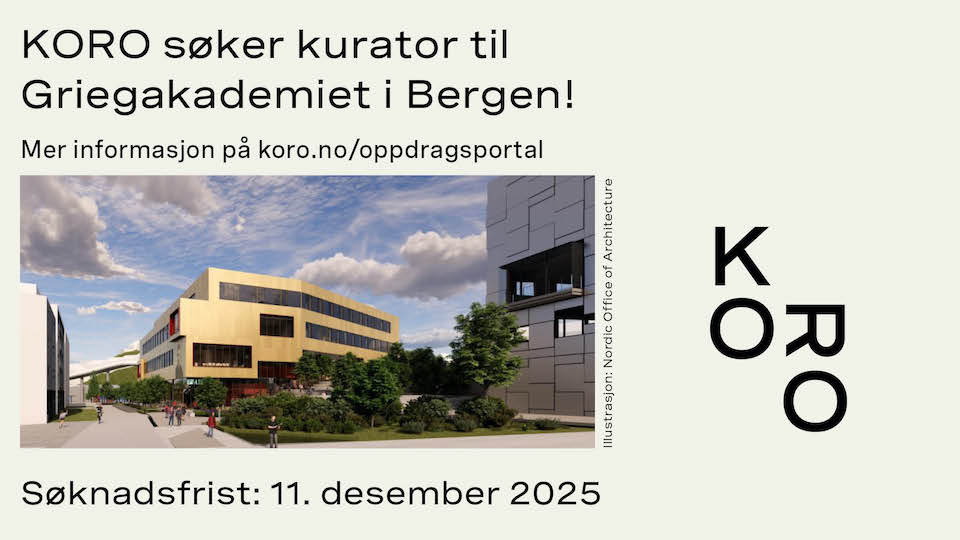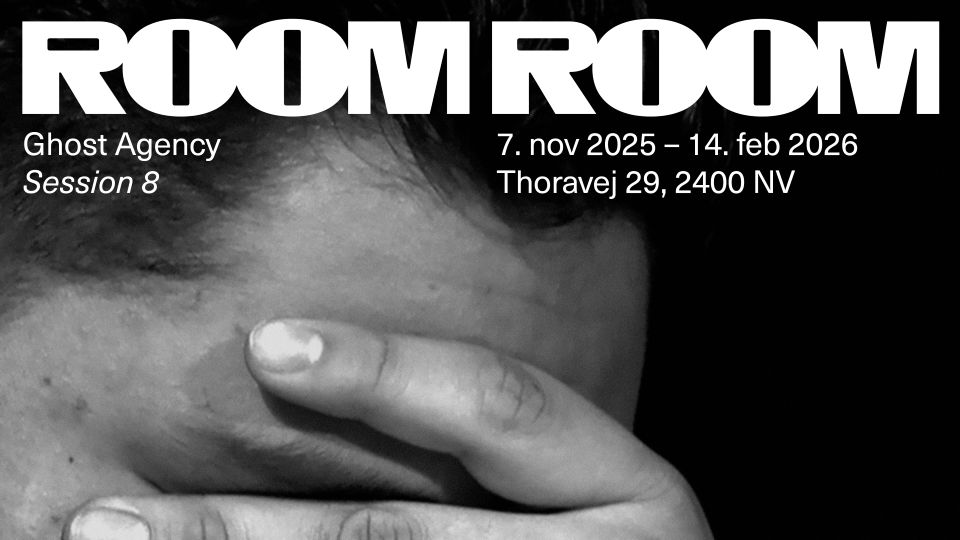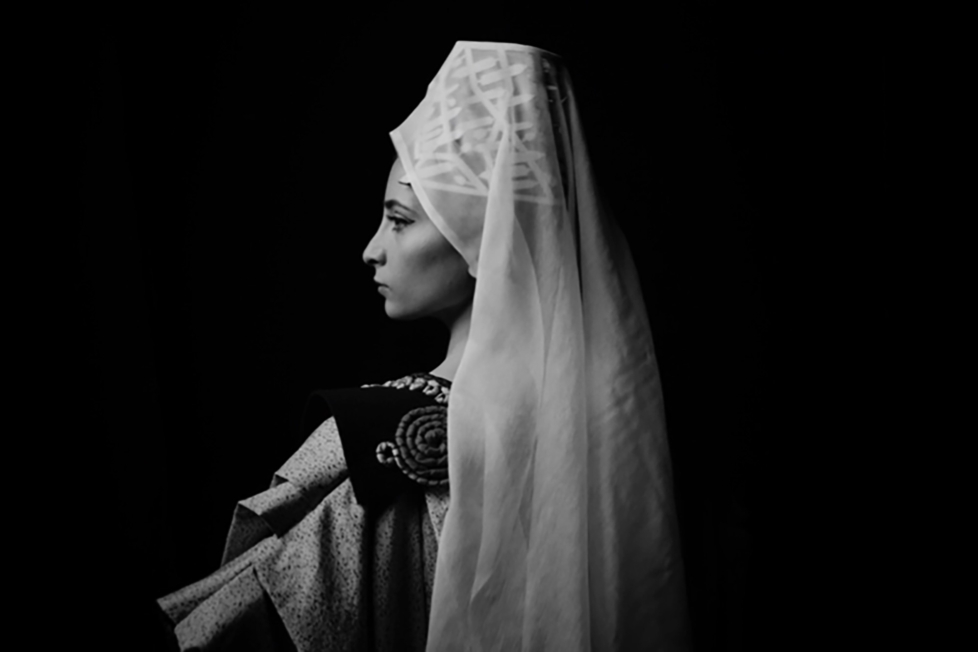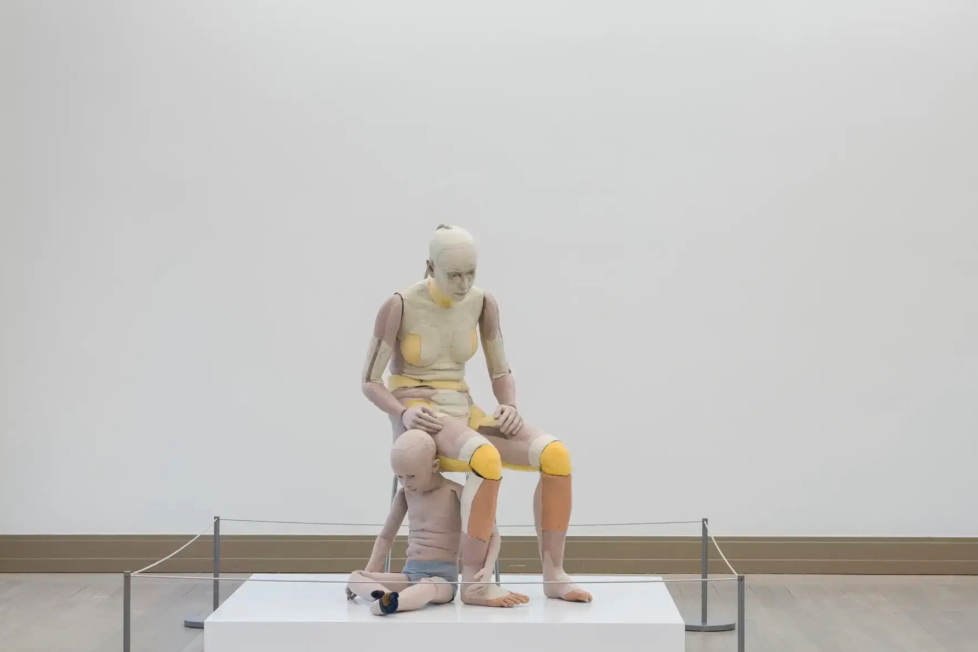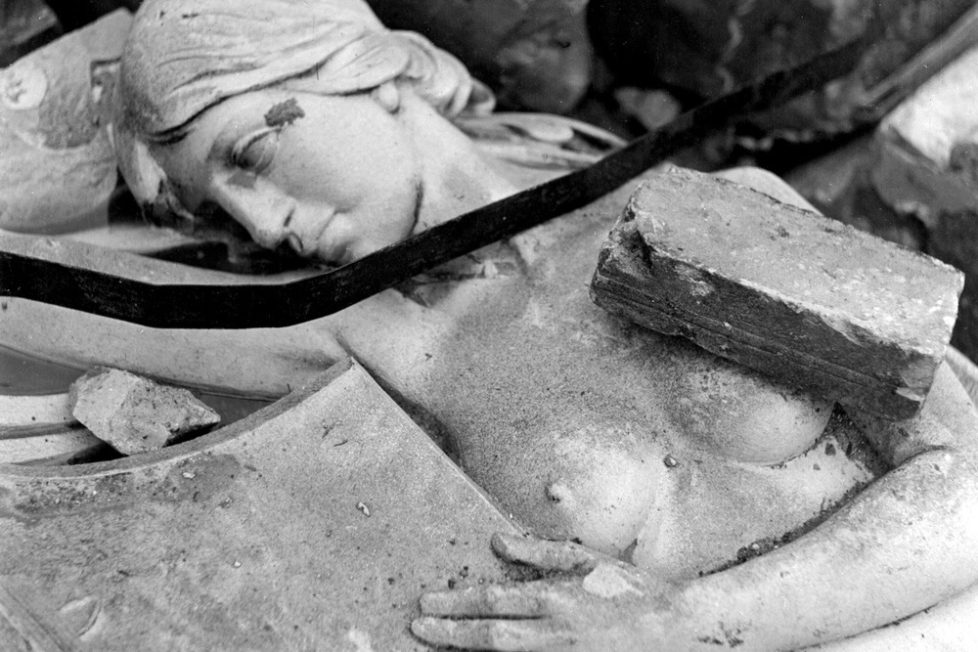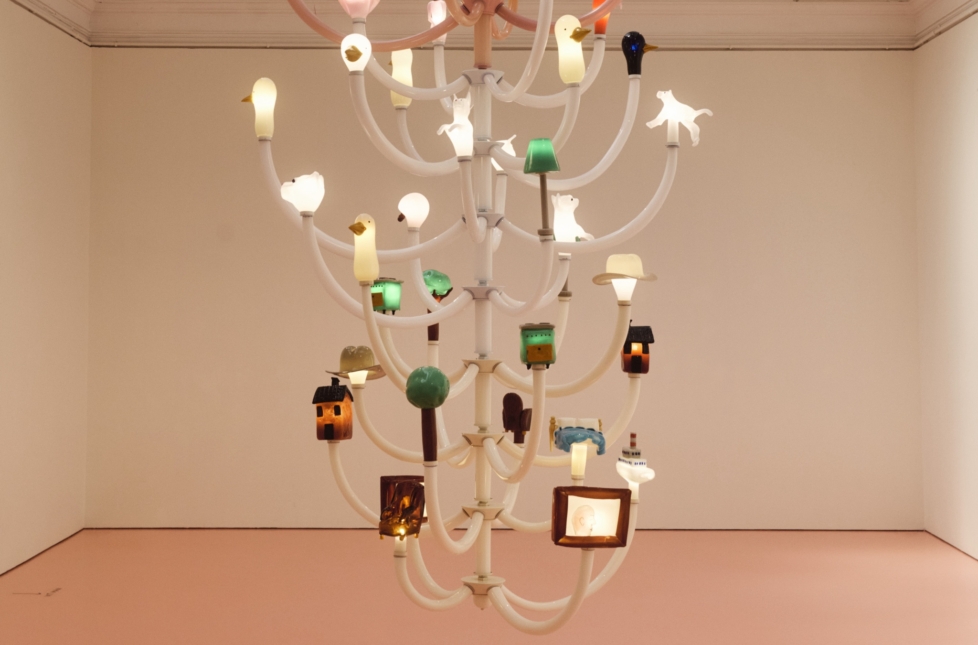
No disrespect to Golden Lion winner Archie Moore of Australia or others, but I dare say that the most important national pavilion at the 60th Venice Biennale, which opened to the public on 20 April, is the Palestinian one. Strictly speaking, no such pavilion exists, but during the press days a manifesto called The Palestine Pavilion was launched by a group of anonymous artists and cultural workers. The manifesto was distributed at a number of pavilions and exhibition venues around Venice; for example, I found it in the South African, Belgian, and Cypriot pavilions. It consists of a poster that calls for immediate action against the ongoing genocide in Gaza, and the headline reads: “What is the future of art? A manifesto against the state of the world.”
“Now is the time for art and poetry,” the text proclaims, advocating an art that takes back political agency and opposes the logic of power and its totalitarian narratives. As if to illustrate the kind of art and poetry championed in the manifesto, a concrete poem about resistance by Oglala Lakota poet Layli Long Soldier is printed on the back.
The manifesto shines a spotlight on the global structures that make genocide possible, questioning the power structures created by national identities. Indeed, the problem of nation states is something that truly stands out when observing the eighty-six pavilion exhibitions in Venice. Forging such strong links between nation states, art, and artists as is done at the national pavilions is problematic overall, and in a number of different ways.
Things are, of course, staggeringly bad in Israel’s case. Artists cannot help where they were born, but representing a state that is being investigated for genocide by the International Court of Justice in The Hague is very much a choice. After much international opposition, particularly in the form of a boycott petition organised by the group Art Not Genocide Alliance (ANGA), which has now been signed by some 24,000 artists and cultural workers, it was announced on the biennale’s first press day that the Israeli Pavilion will not open until a ceasefire is implemented and all hostages are released. However, representing Israel in 2024 would not suddenly become less problematic if a ceasefire were declared tomorrow. In contrast to the curator and artists who would have represented Russia in 2022 but had the decency to withdraw after Ukraine was invaded, Ruth Patir, this year’s Israeli artist, has not actually withdrawn. The exhibition has been installed and a video work is visible through the pavilion’s glass walls.

In response, ANGA continues to protest against what it calls “the Genocide Pavilion.” The group has arranged several demonstrations inside the biennale area, as well as poetry readings and a poster exhibition featuring Palestinian artists presented in the streets and alleys of Venice. It has also launched a separate guide to the Giardini naming eleven nations it considers to be complicit in genocide: Australia, Austria, Canada, France, Germany, Egypt, Great Britain, Italy, Hungary, the Netherlands, and the United States. Personally, I think this list could have been expanded – for instance, it could very well have included the Nordic countries.
However, I would say that the Bolivian Pavilion is a strong runner-up as regards having problematic links to a nation state that actively violates international law. While Russia is barred from taking part in the biennale due to the sanctions in place against the country, the Russian Pavilion is not empty this year – and this is not a case of squatting on Bolivia’s part. In a wall text, Bolivia’s Minister of Culture, Decolonisation, and Depatriarchalisation Esperanza Guevara offers some rather effusive thanks. Russia is thanked “for treating us as friends and not as strangers,” and Italy’s far-right culture minister Gennaro Sangiuliano is thanked and quoted as saying that the biennale is a “space of freedom, encounter, and dialogue and not a space of censorship and intolerance.” The quote is taken from a statement Sangiuliano made in response to demands for the exclusion of Israel from this year’s biennale. In the context of Bolivia’s loan of the Russian Pavilion, Guevara’s use of the quote appears not only as an endorsement of Israeli participation, but also indirectly of Russian participation.
We might well wonder what kind of “decolonisation” Bolivia represents; in any case, it is difficult to sense any solidarity with today’s victims of colonial violence in Palestine and Ukraine. That the Russian Pavilion has been filled with with Bolivian Indigenous art doesn’t help.

In fact, one of the clear trends in the national pavilions this year is a preoccupation with decolonisation – if not in any real structural sense, then at least on the surface. Many have followed the example set by the Nordic Pavilion at the previous biennale, inviting artists with Indigenous backgrounds. The aforementioned Australian Pavilion houses Archie Moore’s monumental installation kith and kin, which in a very concrete way gives centre stage to Indigenous Australians and the injustices they have been subjected to. Most of the floor space is filled by a huge, white, square table with piles of paper that we are told are forensic reports on people of Indigenous background who have died in state custody over the past thirty years.
The ceiling and walls are painted black. Using white chalk, Moore has then drawn a chart detailing his own family history, with Kamilaroi and Bigambul lineages stretching back more than 65,000 years, back to the common origin of humankind. It is more of a visualisation than an actual family tree – many are nameless, some are only represented by racist slurs and categorisations that showcase their lack of status in society, and in some places there are large gaps where we can only imagine what might have happened. According to the artist’s statement in the exhibition leaflet, the work also constitutes an attempt to visualise a more Indigenous understanding of family and time, “where present, past, and future share the same space in the here and now.”
The Brazilian Pavilion has been renamed the Hãhãwpuá Pavilion and presents video works and installations by several artists with Indigenous backgrounds. The exhibition Ka’a Pûera: we are walking birds explores themes such as the struggle for the repatriation of cultural objects, human connection to the earth and nature, and non-violent resistance to a genocide lasting over five hundred years – the latter most explicitly in Ziel Karapotó’s installation Cardume, in which two shoals, one of maracas and one of rifle bullets, appear arrested on a collision course, accompanied by the sound of water, traditional singing, and volleys of gunfire.

In the middle of the Giardini, the biennale’s centre, the United States Pavilion looms bright red, having been completely repainted and covered inside and outside by the works of Jeffrey Gibson, an artist of Choctaw/Cherokee origin and the first Native American to do a solo show in this space. The exhibition is a barrage of bright colours, geometric paintings, and beaded sculptures that bring to mind Pop art as much as Indigenous culture. The works are sprinkled with quotes and slogans, such as “We want to be free” and “If you want to lift yourself up, lift up someone else,” and Gibson incorporates found beadwork in some of his works. He also shows a multi-channel video installation featuring dancers in traditional clothing and a soundtrack by the electronica band The Halluci Nation. The exhibition title, the space in which to place me, appears to have a double meaning. On the one hand, I understand it to be a remark about claiming space. On the other hand, it can be perceived ironically as a reference to a potentially limiting pigeonholing.
Overall, it is truly gratifying and significant that so many artists with Indigenous backgrounds are highlighted at this year’s biennale. However, we have the inescapable fact that through their participation, these artists also place the various nations they represent in a better light than they deserve. Is this a case of artistic takeovers of national pavilions? Or is it rather a case of national virtue-washing and rebranding with Indigenous art? The answer is probably both.

In any case, there are noteworthy exhibitions well worth seeing. Not least Inuuteq Storch’s exhibition in the Danish Pavilion, where the signage usually reading “Denmark” has been overwritten for the occasion by “Kalaallit Nunaat” to mark the first-ever showing of a Greenlandic artist here.
Storch has long worked with a combination of archival images and his own photographs, and in Venice he is showing six different series. Four of these consist of his own photographs and range from his first series At Home We Belong (2010-15), featuring slightly absurd situational images from everyday life in his hometown Sisimiut, to the brand-new series Necromancer, high-contrast black and white images printed on transparent plastic plates lit to cast shadows onto the white wall on which they hang. Two video projections show a steady flow of several generations of family photographs, and a selection of images taken by the very first professional Greenlandic photographer, John Møller (1867–1935), is shown too, juxtaposed with Storch’s own series Keepers of the Ocean (2019).
In the middle of the darkened room where these photographs are projected and displayed in light-boxes is another element that serves as a kind of illustration of the exhibition title, Rise of the Sunken Sun – a red-hot semicircle with mirrors on either side, which is also a reference to the Greenlandic flag. At regular intervals, the room is filled with Greenlandic music, and along the walls in the various halls runs a text by Storch about the attempt to recapture a lost connection to Greenlandic spirituality.

Making a mark as a photographer in today’s visual culture where photography is so ubiquitous is no small task. The fact that Storch does it so successfully has to do not only with the distinctive Greenlandic history, but with his ability to convey atmosphere and a sense of vulnerability – evoking a genuine humanity that will always beat the smooth and manipulated.
A slightly too-slick aesthetic gave me reservations about John Akomfrah’s powerful sound and video installation Listening All Night To The Rain in the British Pavilion. Comprising eight parts called Cantos I–VIII – a reference to Ezra Pound’s famous long poem – Akomfrah shines a spotlight on the connections between our present-day ecological crisis and colonialist politics in works where the present and the past are mixed and juxtaposed. The present-day people depicted in Akomfrah’s work appear paralysed and silent, either lying down or standing still. Or, seen in a more positive light: they appear to be listening. According to the information leaflet, Akomfrah sees listening as activism.

Among the more inspiring confrontations with colonial history is Sandra Gamarra Heshiki’s visually appealing and densely knowledgeable exhibition Migrant Art Gallery in the Spanish Pavilion. Originally from Peru, Gamarra Heshiki is the first artist with an immigrant background to represent Spain in Venice. Her paintings mimic historical art from the colonial era while adding layers of text, images, and objects that comment on and modify history. Notably, she focuses on the role of museums and art in colonisation. As in the case of Akomfrah, colonialism is not presented as a thing of the past. For example, the following highly topical sentence is painted on one of the pictures: “trans body is to normative heterosexuality what Palestine is to the West: a colony whose extension and form is perpetuated only through violence.”
The Chilean pavilion has taken the opposite approach insofar as it has, for the first time ever, invited an artist who belongs to the Chilean diaspora. The text on the wall found in Swedish-born Valeria Montti Colque’s exhibition Cosmonación merits comment in the context of the national pavilions as it specifically focuses on the archaic construct of the nation and claims that nationalism is an obstacle to the evolution of present-day civilisation. The diaspora’s relationship to several cultures thus becomes an ideal. But in Montti Colque’s video work accompanying the sculptural works and wall work, the presumably Chilean woman we follow appears isolated in urban Sweden: she celebrates alone and parades alone, actions normally associated with human contact and community.

The Nordic Pavilion transcends national borders by being a collaborative space operated by Sweden, Norway, and Finland. This year, Sweden and Moderna Museet have invited the young Swedish artist Lap-See Lam to create a project in collaboration with the Norwegian composer Tze Yeung Ho and the Finnish artist Kholod Hawash. All three have family backgrounds from places other than the Nordics, and the work The Altersea Opera is relievingly transnational in every sense. Visually, narratively, musically, and linguistically, it is a work that mixes European and Asian culture. Not that this is very remarkable in in itself – after all, contemporary art is international. Rather, the expectations set by the biennale framework are what makes it remarkable.
In this year of the dragon, Lam has transformed architect Sverre Fehn’s pavilion into a “dragonship” with an enormous dragon’s head at one end of the building and the tip of its tail sticking out of the ground at the other end. The hull itself inside the pavilion is made up of dense bamboo scaffolding. In the exhibition, the opera work is presented in the form of a video installation, while Hawash’s costumes are displayed on human-sized stands.

The whole thing is tastefully presented with plenty of light and air, but the video makes a rather modest impression – not least compared to all the large immersive video exhibitions around the Giardini. The contrast to the live performance of the opera is stark. Seeing the work performed at full volume with the singers climbing around the bamboo was a very different experience, so it would be a shame if it is true that the two performances during the opening days will not be followed by more performances for the public.
This is also the first time that the three participants in the Nordic Pavilion have collaborated on a single collective work. Such collaborations are not always successful, but in this case the three artists seem to complement each other perfectly – alongside a good team of actors, singers, and musicians. I can’t say I miss the demanding group exhibition format where three different projects fight for attention – particularly given that the biennale audience’s attention is already spread thin.
Egypt contributed a work in the musical theatre genre this year too, albeit in a filmed version. Wael Shawky’s Drama 1882 attracted long queues during the opening days, and not without reason. This strangely puppet theatre-like and musically seductive performance of the last days of the Urabi Revolution (1879–1882) before the bombing of Alexandria by the British army was certainly one of the more captivating works at this year’s biennale.

An anti-colonial tendency is also evident in the form of an increasing number of participants from former colonies, especially African countries. This year, Benin, Ethiopia, Timor Leste, and Tanzania participate for the first time. Some of these newer pavilions are in the Arsenale area. Others are scattered around in various parts of the city, and can be difficult to find – if not downright impossible. The only thing I found when I turned up at the spot on the map marking Congo’s Pavilion, a group exhibition with the extremely topical title Lithium, was a couple of other people engaged in the same unfruitful search.
While many of the former colonial powers are busily engaging in critical self-examination – or artwashing, depending on how you look at it – the newer pavilions tend to exude a certain national pride and optimism prompted by their participation. For example, the very noteworthy Nigerian Pavilion, the second ever to be presented, bears the title Nigeria Imaginary, and the curator Aindrea Emelife describes it as a place for dialogue about a new Nigeria and the country’s “optimistic future.” We might say that this is a more ‘innocent’ type of nationalism propelled by a spirit of liberation and the development of prosperity, but even so it came across as navel-gazing, and an unfortunate focus from the point of view of art. In any case, the works in the exhibition – among them new works by Precious Okoyomon, who made a strong impression with her participation in the exhibition The Milk of Dreams during the previous Venice Biennale – do not seem to limit themselves to national aspirations.

In a situation where Italy’s neo-fascist president Georgia Meloni has appointed Pietrangelo Buttafuoco – a representative of the extreme right who, I’ve been informed, has produced a very dubious and misogynistic body of writing – as head of the Venice Biennale, it is going to be absolutely necessary to maintain a critical focus on the biennale structure’s inherent nationalism. Fortunately, Venice during the biennale is also a meeting place for alternative forces in the arts, so Buttafuoco will not necessarily find his job an easy one.
Among the bright spots this year, it should be mentioned that even though Italy and the biennale do not recognise Palestine as a state, and thus have not invited the creation of a Palestinian pavilion, Palestinian artists were represented in a collateral event, the group exhibition South West Bank, and the Palestinian artist Samia Halaby was awarded a special mention for her participation in the main exhibition Foreigners Everywhere. Halaby is also participating in the group exhibition organised by the Palestine Museum US, Foreigners in Their Homeland, which was rejected by the biennale but nevertheless came to fruition at the European Cultural Center’s venue at Palazzo Mora.

Other independent exhibitions and initiatives also merit mention, such as the group exhibition When Solidarity Is Not a Metaphor curated by Nataša Petrešin-Bachelez, who, among other things, is a co-founder of the Initiative for Practices and Visions of Radical Care (2020–ongoing). This exhibition, which took place next door to the Arsenale, included works by Paula Valero Comín, D Harding, and Adelita Husni-Bey, and was also accompanied by a discursive programme that I unfortunately became aware of too late.
I did, however, manage to catch some of the activities organised by the Institute of Radical Imagination at the activist house Sale Docks. For example, director of the Van Abbemuseum in Eindhoven (NL), Charles Esche had a conversation with representatives of the Indonesian collective Taring Padi, and the Palestinian artist Yazan Khalili gave a lecture on the collective Question of Funding and issues related to artistic autonomy. As is well known, both Taring Padi and Question of Funding were accused of anti-Semitism during Documenta 15 in 2022. However, the main focus of the conversation programme was on the two collectives’ radical practices, which were largely overshadowed by all the hubbub in Kassel. The Institute of Radical Imagination also launched a small book entitled Art for Radical Ecologies (manifesto). It is reassuring to know that places and communities like this exist in Venice.

Note, 8 May 2024 : An earlier version of this article did not include the author’s views regarding the list, published by ANGA, of nations complicit in the genocide.










